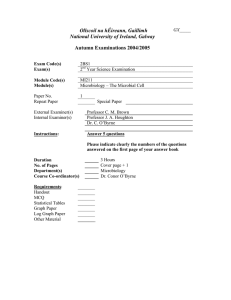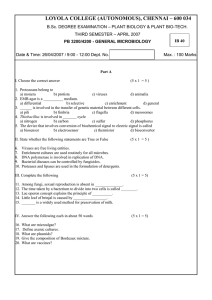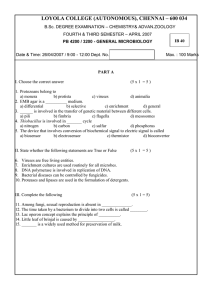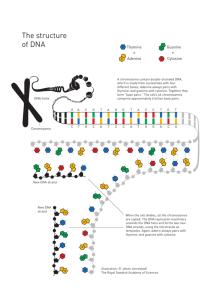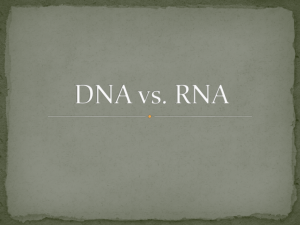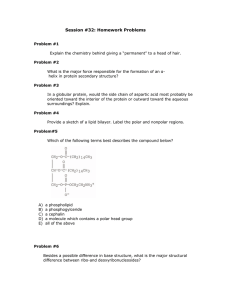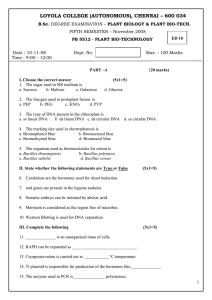LOYOLA COLLEGE (AUTONOMOUS), CHENNAI – 600 034
advertisement
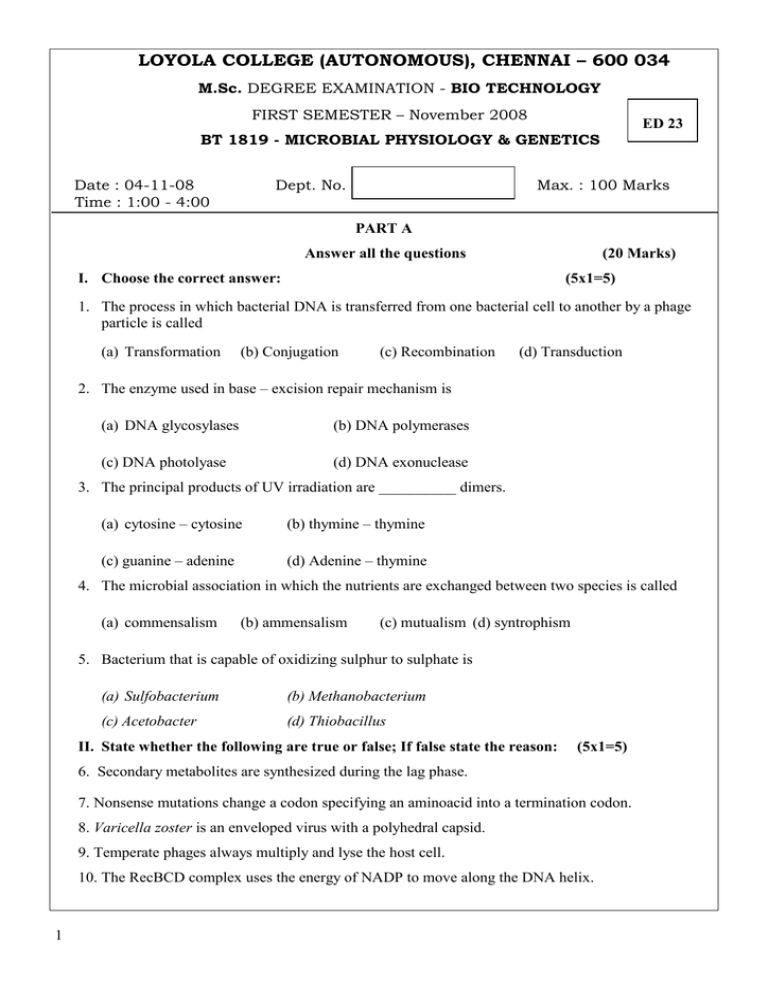
LOYOLA COLLEGE (AUTONOMOUS), CHENNAI – 600 034 M.Sc. DEGREE EXAMINATION - BIO TECHNOLOGY FIRST SEMESTER – November 2008 ED 23 BT 1819 - MICROBIAL PHYSIOLOGY & GENETICS Date : 04-11-08 Time : 1:00 - 4:00 Dept. No. Max. : 100 Marks PART A Answer all the questions (20 Marks) I. Choose the correct answer: (5x1=5) 1. The process in which bacterial DNA is transferred from one bacterial cell to another by a phage particle is called (a) Transformation (b) Conjugation (c) Recombination (d) Transduction 2. The enzyme used in base – excision repair mechanism is (a) DNA glycosylases (b) DNA polymerases (c) DNA photolyase (d) DNA exonuclease 3. The principal products of UV irradiation are __________ dimers. (a) cytosine – cytosine (b) thymine – thymine (c) guanine – adenine (d) Adenine – thymine 4. The microbial association in which the nutrients are exchanged between two species is called (a) commensalism (b) ammensalism (c) mutualism (d) syntrophism 5. Bacterium that is capable of oxidizing sulphur to sulphate is (a) Sulfobacterium (b) Methanobacterium (c) Acetobacter (d) Thiobacillus II. State whether the following are true or false; If false state the reason: (5x1=5) 6. Secondary metabolites are synthesized during the lag phase. 7. Nonsense mutations change a codon specifying an aminoacid into a termination codon. 8. Varicella zoster is an enveloped virus with a polyhedral capsid. 9. Temperate phages always multiply and lyse the host cell. 10. The RecBCD complex uses the energy of NADP to move along the DNA helix. 1 III. Complete the following: (5x1=5) 11. Leghaemoglobin combines with oxygen to form __________________. 12. One - gene - one enzyme hypothesis was proved using the organism ______________. 13. The two sugar derivatives of peptidoglycan layer are ___________ and ___________. 14. Woolsorter’s disease is caused by _____________. 15. The medium that is used to study the antibacterial activity is _____________________. IV. Answer the following questions each in about 50 words: (5x1=5) 16. What is humus? 17. Define frame-shift mutation. 18. What are base analogs? 19. Name the proteins involved in mismatch repair? 20. Write notes on baiting technique. PART B V. Answer any five of the following questions each in about 350 words. (5x8=40) 21. Classify the plasmids based on characteristics and functions. 22. Briefly describe the various phases of growth curve. 23. Give an account of bacterial conjugation. 24. Write a comprehensive note on microbial – host interaction. 25. Describe any three modes of DNA repair mechanism in bacteria. 26. Illustrate the biogeochemical cycling of carbon. 27. Explain food spoilage and add a note on chemical methods of preservation. 28. How are microbes classified based on their electron and carbon requirements? PART C VI. Answer the following questions each in about 1500 words. (2x20=40) 29. (a) Explain the working principle and applications of electron microscope. (or) (b) Describe the role of Rec proteins in bacterial recombination. 30. (a) Describe the symbiotic role of microbes in fixing the nitrogen in leguminous plants. (or) (b) Define operon. Enumerate the features of Trp operon in negative regulation. ************** 2

